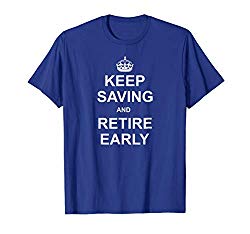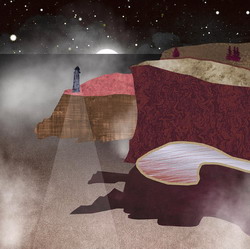A Geographic Look At Unemployment From Coronavirus
Prior to the coronavirus pandemic, the U.S. was in it’s strongest job market in 50 years. In January I wrote about the incredible bull market that dominated the last decade. The spectacular rising curve of equities in the past 10 years was matched only by the plunging line of unemployment.
Here’s what the unemployment chart looked like in January:

As of January we had 92 consecutive months of gains in payrolls in America, the longest continuous stretch since records began. And the U.S. economy added 18.3 million jobs from late 2010 to January 2020.
Well, things have uhh …changed. Here’s the unemployment chart now:
You kind of have to look close to see the spike, which is almost a vertical line. Yep, 14.7% Numbers vary slightly since they’re still coming in, but according to the Tax Foundation:
Approximately 15.1 percent of the U.S. civilian labor force has now applied for or is receiving unemployment compensation benefits (through May 2, the latest data). The previous high was 7.9 percent early in 1975 during a recession, with a Great Recession peak of 4.8 percent between February and April 2009. Entering March 2020, unemployment claims as a percentage of the civilian labor force stood at 1.4 percent.
On The Map
Regular Accidental FIRE readers know I’m a map guy and seeing things on the map usually reveals trends and insights that pure data can’t show. The best map I’ve found to show the unemployment data is this interactive version that aggregates by county from SimpleMaps.
The data is accurate as of Friday May 8th when the Bureau of Labor Statistics released the most recent figures.
In just looking at the map it appears the West is getting hit harder but some of that is visual deception because their counties are larger and the cartographer used a rather thick white line to divide counties. So smaller eastern counties don’t show as much color.
If you look, however, at Appalachia through Pennsylvania you can see a very dark colored corridor which of course matches some of the poorest areas in the country.
Another site that has an interactive unemployment map by county is at Spark Rental. Their data is as of March 2020 so it’s a little older.
State Readiness
Unemployment benefits are state-run with federal oversight, so what is the financial ability to pay out unemployment benefits by state? It’s a mixed bag. According to the Tax Foundation:
Unfortunately, many states entered the crisis with woefully inadequate unemployment compensation trust funds. Trust funds in California, Massachusetts, New York, Ohio, and West Virginia are nearly or completely exhausted, with depletion imminent in Connecticut, Texas, Illinois, and Kentucky as well. According to our projections, a dozen states only have enough left in their funds to pay out a month’s worth of benefits based on those who have filed for or are receiving benefits to date; since payments lag claims, it may take an additional week or two for funds to be fully exhausted.
Here’s the visual breakdown of unemployment trust fund readiness by state:
Something most aren’t aware of is that several states reduced the length of time that a claimant could receive unemployment benefits after the 2008 recession. These reductions were an attempt to replenish their unemployment insurance trust funds.
Most states provide benefits for 26 weeks but some, especially in the Southeast, reduced down to as little as 12 weeks.
In Perspective
In the seven weeks leading up to May approximately 33.5 million people filed for unemployment in the United States. To give context to that number, the US Department of Labor statistics states that in February 2020 (before the pandemic) there were a total of 164.2 million workers in the civilian labor force.
I found two cool sites that use mapping to put the 33.5 million jobs number in context. The State of Unemployment map let’s you visualize what 33.5 million jobs equates to by showing states whose combined number of jobs equals 33.5 million before the coronavirus pandemic started.
On their site you can click the button on the right to see different groupings of states that add up to that number (approximately).
The folks at Engaging Data have a similar map and also give you options to show most states, least states, and also to choose by area.
Lastly this very cool interactive map from Urban.org allows you to visualize the estimated number of jobs lost by census tracts, along with the job type.
As you explore the data it’s obvious that lower income service jobs are being hit the hardest. When your local government has made it illegal for your very job to be conducted, that obviously creates problems.
Going Forward
The CARES Act did make some changes to unemployment insurance that will benefit those needing help. For instance gig workers, self-employed individuals, and other categories of workers that normally would not qualify for unemployment insurance will now qualify for Pandemic Unemployment Assistance (PUA) until the end of 2020.
The legislation also increases the per-week benefit through July 31st and provides benefits for an additional 13 weeks beyond a state’s existing regulations, until the end of 2020.
But like everything impacted from the coronoavirus pandemic, only time will tell if these changes will really make a difference, or if they will need to be extended.
Your turn – Have you been laid off from the coronavirus pandemic? Have you been able to collect unemployment benefits?
















































Great visualizations Dave! Some cities, counties, and states will get hit much harder than others, both on the healthcare side and the economic side. These visuals reinforce that reality.
Yes, there will be huge geographic variances and as a geographer I find it fascinating! I added a link to the map on your site
Thanks for pointing out these sources, I am also a map guy. It is a shame there is such a disparity between states and money in their unemployment hopper. It would be interesting to drill down more and see some of the causes for that. A handful of the “no state income tax” states seem to be doing pretty well with this (Wyoming, Alaska, Florida) taking the 1,2,3 spot. But then Texas comes in and ruins my trend.
I was initially thinking the larger population areas were just having a hard time due to managing a larger population. But then I noticed my state isn’t doing much better and I live in one of the smaller ones.
Thankfully, Mrs. Max OOP and myself are still employed, at least for the time being.
Max
Yeah that more detailed analysis would get complex real fast and also more “fuzzy”. I honestly think the urban/rural divide is a huge one, and that divide also tends to play out in a white/blue collar job manner as well.
The beach volleyball company I work for had to stop running classes, so it did affect me for contract work. I wasn’t going to file for benefits, but as of two days ago I changed my mind.
You should file for sure, it’s hard for the company to operate when their jurisdiction makes it illegal for them do do so. Good luck with it Tonya!
Nice visualizations of the data analysis. In particular, that last map looks really interesting as you can see in detail the number of jobs per job type that were lost per county. I would expect more low-income jobs to be lost than white-collar/higher-income jobs
Fortunately, I’m still employed as I was working as a work-from-home engineer before the pandemic. I have a family member working as a nurse who apparently just last night got in close contact with another nurse who just found out she got the coronavirus.
Low income people are getting destroyed, especially service industry jobs. It’s really sad. High income white collared folks can work from home very often. I see this possibly widening the wealth gap even more.
i was just about hoping mrs. me would get laid off and get a raise! nope, we’re both working.
Ha, I can see the poster now, “get a raise, get on the dole!”
dude, i’ve always loved calling it “the DOLE!”
ha me too. It comes from the term “doling out”, I believe from things like bread and cheese handouts during the depression.
As you know I really love these map tools you make available. Pretty interesting data for sure and, clearly depict a very stark picture. That vertical spike is simply insane.
Here’s hoping we can safely and expeditiously re-open the country and get the trend line headed the opposite way.
Yep, stark indeed. And as I mentioned in another comment the last tool shows how poorer service industry folks are getting the brunt of it.
These maps are incredible Dave!
We wrote about unemployment and the corona virus and will reference this post. The visual nature of the maps make it so much easier to understand.
Thanks, I appreciate you referencing it!
It’s crazy how fast unemployment shot up. Thanks for your wonderful maps Dave. I always like a good bit of data, even if it’s rather tragic like this.
Hopefully a good chunk of those people can get back to work soon.
Me too Tako. Glad you like the maps and as always thanks for supporting my blog!